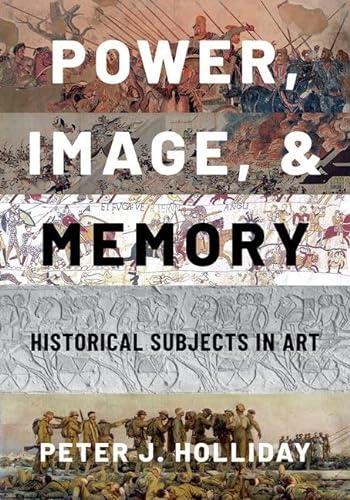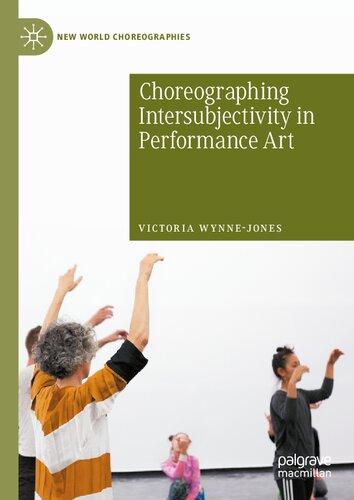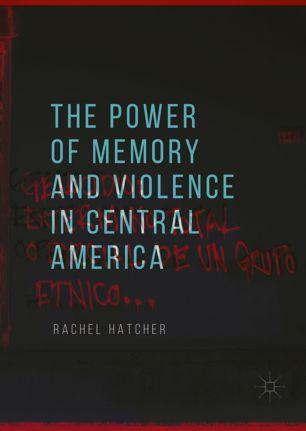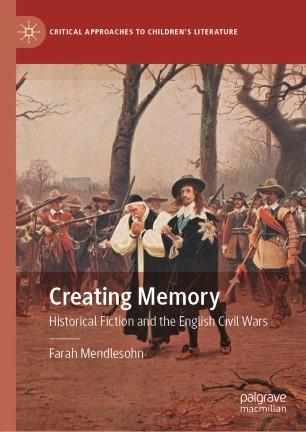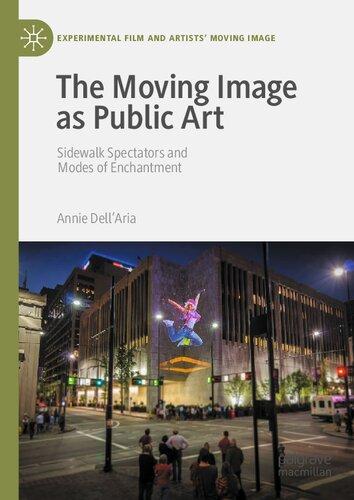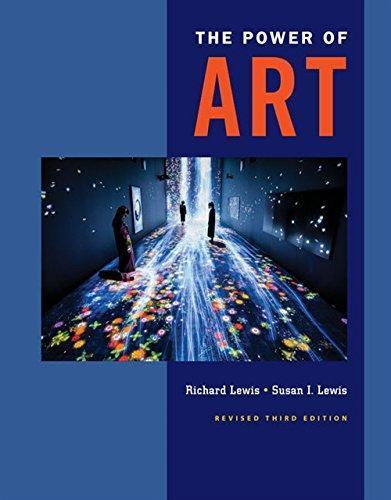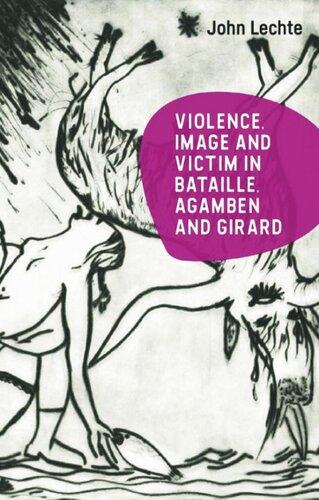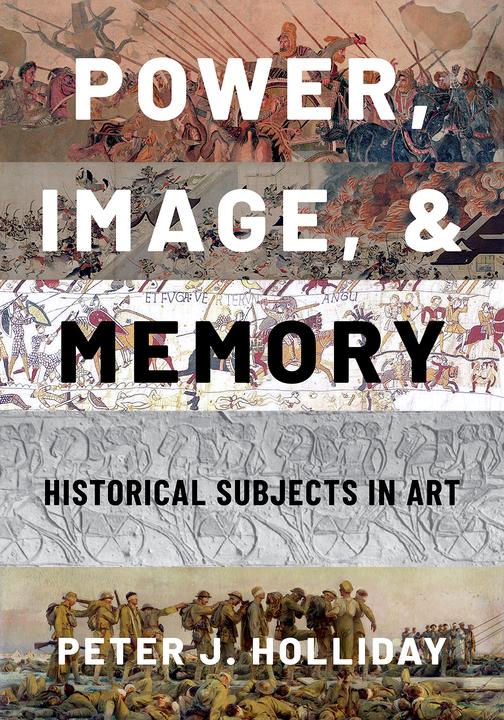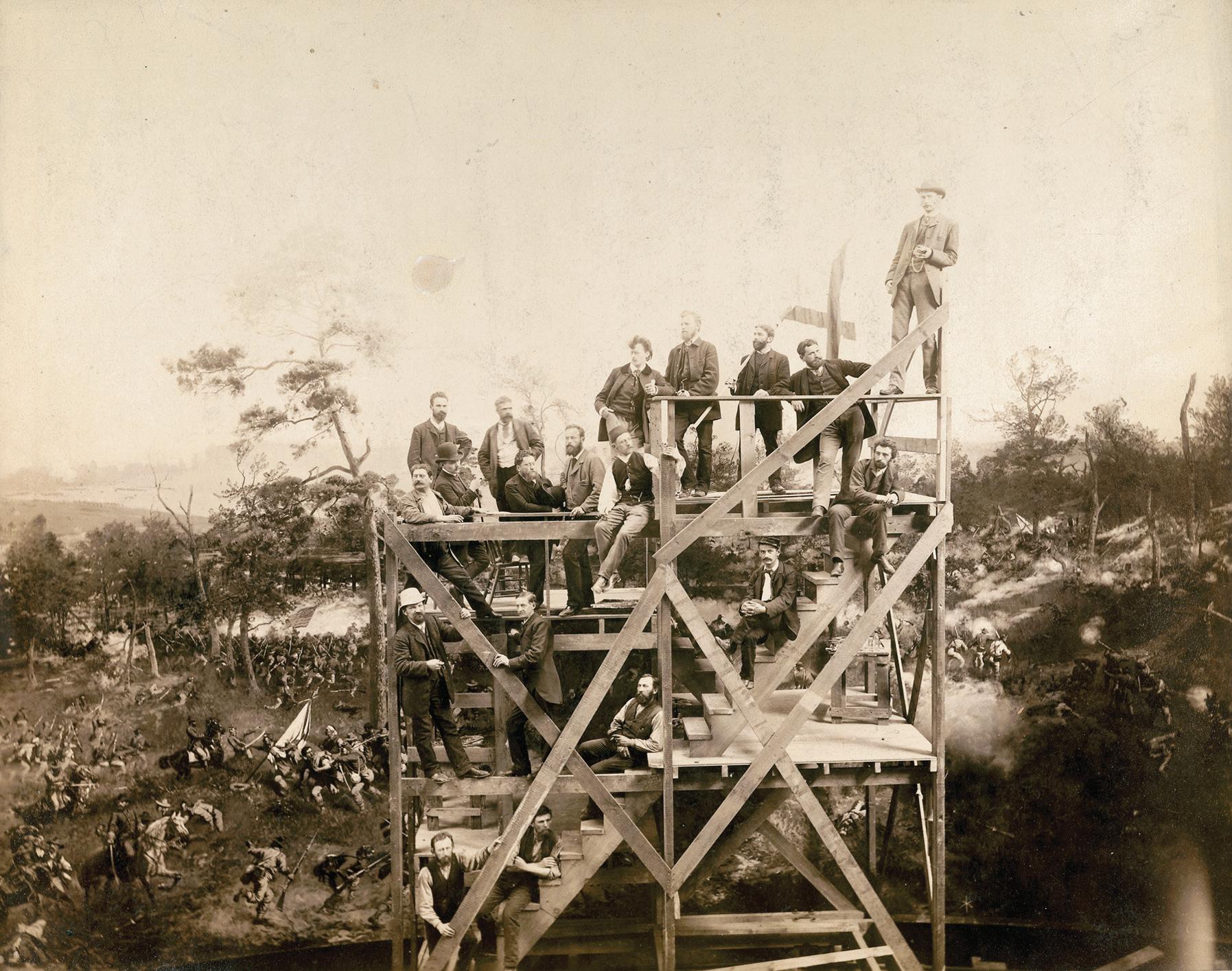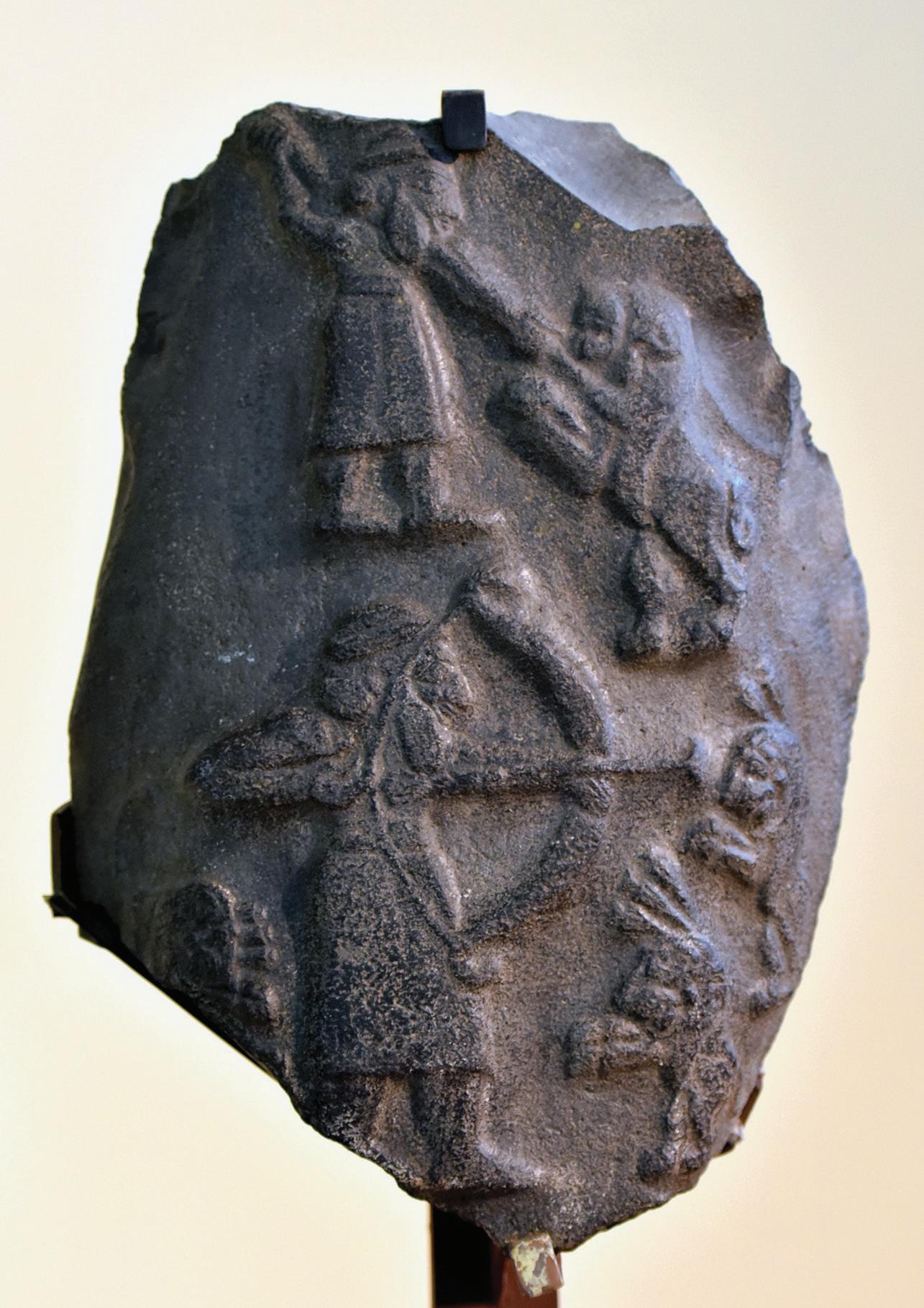Introduction
History into Art
As America reckons with its legacy of racial injustice, monuments commemorating the Civil War remain a particularly contentious sphere of discourse.1 The Cyclorama of the Battle of Atlanta presents an instructive case. Originally intended as a lucrative attraction, 140 years of promotion, mythmaking, revisionism, distortion, and misinterpretation, largely determined by where the painting was displayed, turned it into what Jack Hitt describes as “a palimpsest of Civil War memory.”2 Cycloramas— massive panorama paintings designed for exhibition in large rotundas—thrilled nineteenth-century audiences with immersive experiences that transported them to other worlds.3 Several American companies produced panoramas that traveled across the country, just like the carnivals and theatrical troupes of the era. By the 1880s, savvy entrepreneurs recognized that the generation that had fought the Civil War was ready to tell its stories, and audiences wanted to hear them.4 More crucially, as Caroline E. Janney observes, “the veterans and civilians who survived the four bloody years of war were acutely aware that people were actively shaping who should be remembered—and omitted—from the historical record . . . What individuals and communities elected to tell of the war held enormous potential for staking claims of authority and power.”5
At Milwaukee’s American Panorama Company (APC), William Wehner hired Friedrich Heine to lead seventeen German and Austrian painters in rendering the fateful battle (Fig. I.1). In preparation, the artists (using translators) spoke with Union veterans, traveled to Atlanta to make field studies of the battle site, and there also spoke with Confederate combatants. Back in the studio, Theodore Davis, a war illustrator for Harper’s Weekly who witnessed the battle, assisted.6 They settled on a precise time and place to depict: 4:45 p.m. on July 22, 1864, on the railway line just outside Atlanta near the Troup Hurt House, where Union forces had established a battery line. Four Confederate brigades broke through the line and took control of the Union artillery. Almost immediately General John Logan led Union reinforcements in a counterattack and beat back the rebel forces. It was pivotal moment when the battle—and perhaps the war itself—could have gone either way. In the end, however, it was a decisive Union victory that boosted Northern morale, secured Lincoln’s reelection that November, and led to the collapse of the Confederacy. It was worthy of commemoration.
Power, Image, and Memory. Peter J. Holliday, Oxford University
10.1093/oso/9780190901080.003.0001
With portrayals of celebrated Union officers but no recognizable Confederates,7 the cyclorama was originally designed to appeal to Northern audiences. It opened in Minneapolis in 1886, and successive audiences in Detroit, Indianapolis, and Baltimore marveled at its massive scale: originally 49 by 382 feet in circumference (now 49 × by 371.2 feet, or 13 × by 109 m); they delighted in the accuracy of its detailed uniforms, weaponry, and topography (Fig. I.2). General Sherman claimed it was “the best picture of a battle on exhibition in this country.”8 Nevertheless, facing competition from the new magic lantern shows and other mass entertainments, the owners declared bankruptcy in 1890.
Victory usually confers the power to shape how a conflict is remembered, but at this time the South was attempting to rewrite the war’s history. When national cemeteries established by the Union after the Civil War excluded the burial of Confederate soldiers, Ladies’ Memorial Associations (LMA) were formed to retrieve the remains of Confederate soldiers and establish Confederate cemeteries, often solemnized with simple markers or cornerstones for future monuments. The Ladies were the elite women of their community, the wives of doctors, lawyers, prominent businessmen, and property owners. Ostensibly interested exclusively in domestic matters, these matriarchs exerted immense influence over customarily
Fig. I.1 Artists of the American Panorama Company, including Friedrich Heine (in pith helmet at far left, second level) in front of the nearly finished Battle of Atlanta in their Milwaukee studio on June 6, 1886. Photo: Wisconsin Historical Society, WHS-26071
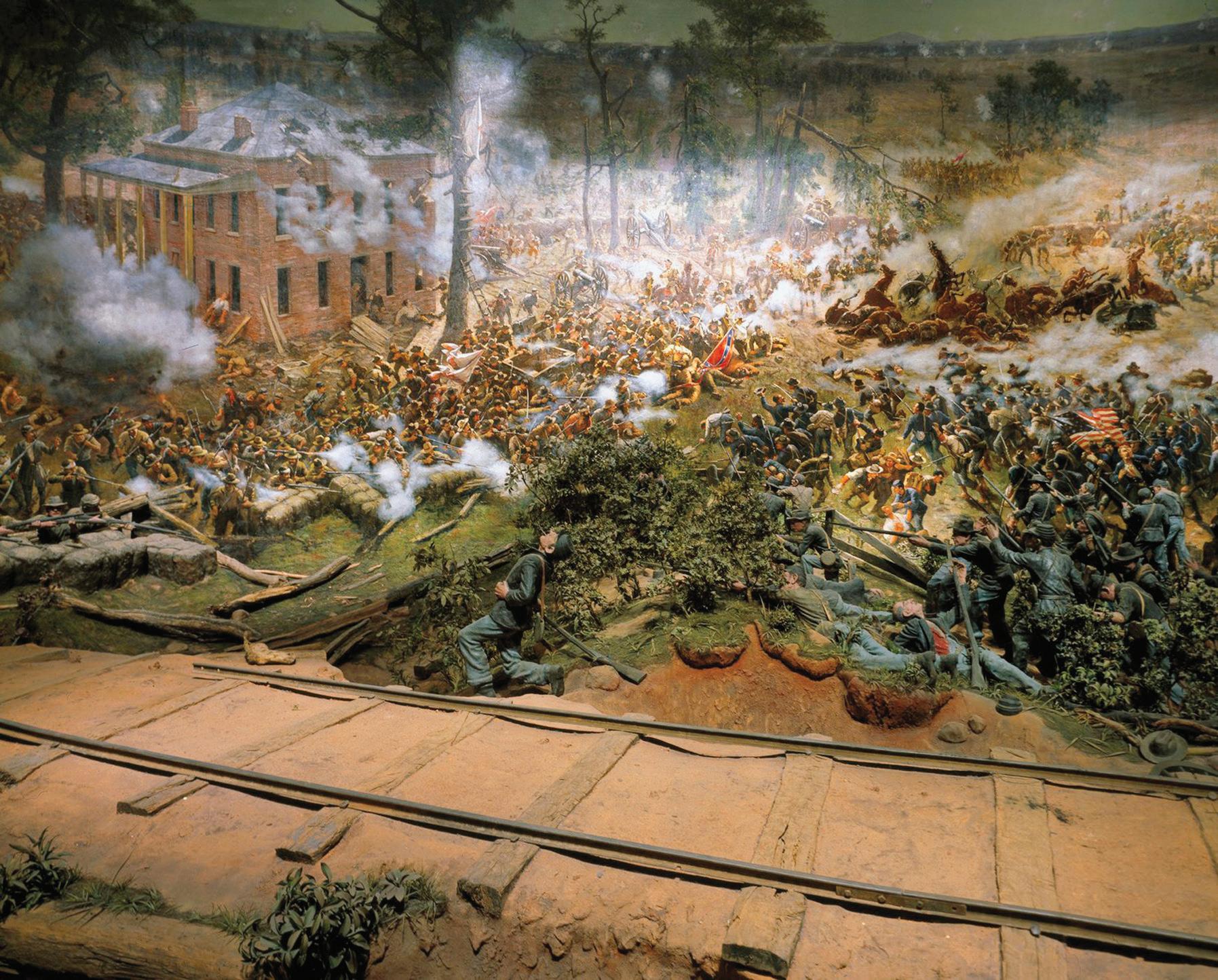
male civic prerogatives.9 In 1894, the newly established United Daughters of the Confederacy (UDC) became the central administering organization for regional LMAs. Its members understood that how people remembered the Civil War would profoundly affect the ability of their families to maintain their inherited entitlement. Consequently, they became instrumental in promoting the “Lost Cause,” a conscious effort to substitute slavery’s primary causal role with disingenuous Constitutional disagreements over state and federal authority.10 They helped fabricate the tradition of a gracious white antebellum culture, in which the slave-labor camp of cotton production was reshaped into the magnolia-scented arcadia of the plantation manor, a construct designed to represent the past as self-evident, an ideological strategy to determine not only which past is sanctioned but also how the present finds its own lineage in that past. The UDC successfully secured public and private funding to erect hundreds of Confederate memorials in public spaces from the 1890s through the 1920s—notably the period coinciding with the implementation of Jim Crow laws and the resurgence of the Klan—since “monuments would speak more quickly, impressively, and lastingly to the eye than the written or printed word . . . ([and]) attract more attention.”11 Rather than simply honoring the Southern war dead, these memorials substituted alternative memories in order
Fig. I.2 Cyclorama of the Battle of Atlanta, detail. Atlanta, Atlanta History Center. Photo: Carol M. Highsmith Archive, Library of Congress, Prints and Photographs Division)
to sever those “mystic chords of memory” that Lincoln had trusted would bind the wounded nation together.
In 1891, Georgia promoter Paul Atkinson saw fresh potential in the way the cyclorama did not depict the actual outcome of the battle. He purchased and removed it to Atlanta where he recast the impending Northern victory as a Southern triumph by having artisans add nearly a dozen Confederate soldiers, overpaint Union flags with that of the Confederate States, and renovate a cowering group of surrendering Confederate soldiers to portray Yankees fleeing the battle, their fallen Union flag trampled in the mud. When it opened in 1892, Atlanta newspapers hailed the painting as “wonderful, from the mere fact that it is the only one where the Confederates get best of things.”12 By depicting a victory that never happened, the cyclorama was altered to provide propaganda for the Lost Cause narrative and consequently become Atlanta’s Confederate monument, a symbol to uphold white supremacy under the pretense of commemorating history.
After Atkinson took a financial hit, the cyclorama passed among several owners, was moved to Grant Park, and was finally donated to the city. In 1922, it was given a new stone building in the park befitting its role as the city’s Confederate shrine but had to be cut down to fit. The renovation was marked with Lost Cause celebrations coordinated by the UDC, Sons of Confederate Veterans, and veterans themselves.13 Nevertheless, the cyclorama suffered from neglect until the Works Progress Administration funded a restoration under the direction of Atlanta painter Wilbur G. Kurtz, which included new lighting and the addition of 128 plaster figures to a three-dimensional diorama in front of the painting, heightening its illusionism for audiences now used to the spectacle of Hollywood movies (Fig. I.3); a display of additional pictures and artifacts underscored its Lost Cause message.14 In 1937, Mayor William B. Hartsfield led a group that sought to divorce the cyclorama from the Lost Cause to fit their progressive vision of a new city driven by commerce: “It must be remembered that this picture is not a shrine or a memorial. It was painted purely for exhibition purposes, not to be worshipped or venerated as a relic, but as a vivid portrayal of the Battle of Atlanta.”15 The hoopla attending the 1939 Atlanta premier of “Gone with the Wind” upended their efforts, however, ensuring the cyclorama remained a monument to the Confederacy.
In the 1970s, white suburbanites pushed to have the cyclorama moved again to become part of a neo-Confederate mega-shrine at Stone Mountain. Maynard Jackson, the first African-American mayor of Atlanta, intervened to free the cyclorama from Confederate myths and reclaim it for an Atlanta reshaped by the civil rights movement: “The Cyclorama depicts the Battle of Atlanta, a battle that the right side won, a battle that helped free my ancestors . . . I’m going to make sure that that depiction of the battle is saved.”16 Finally in 2019, a newly restored cyclorama opened with a New South perspective at the Atlanta History Center in suburban Buckhead. Using documentation for the original APC project, Lincoln Stone and half a dozen other artists recreated missing sections of the painting, restored the fleeing Yankees to Confederate prisoners, and repaired the diorama foreground.
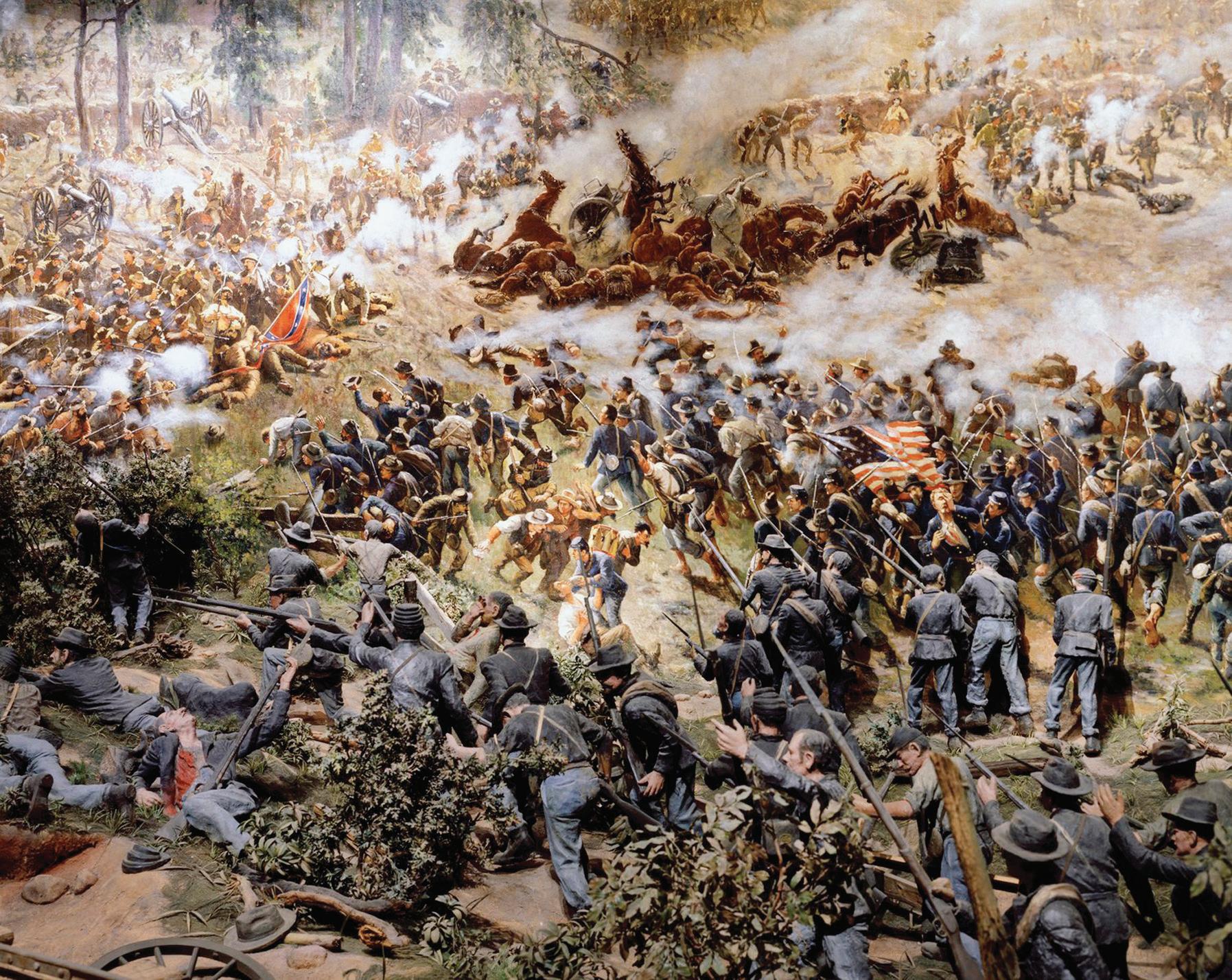
The new installation transforms the cyclorama from an attraction to an artifact— no longer a monument effecting Atlantans’ collective memory, but rather a meticulous explanation of how this work was revised to reflect fluctuating understandings of the past, a changing history of Southern identity.17
Collective Memory
The story of the Atlanta Cyclorama—even as condensed here—demonstrates how divisive the process of historical reckoning can be, particularly when provoked by shifts in power and the conflicting collective memories of diverse communities. The French sociologist Maurice Halbwachs first developed the concept of collective memory (also sometimes called social memory) as “a reconstruction of the past in light of the present.”18 Although only individuals remember, Halbwachs argued that when individuals call up thoughts about past events, their understanding of them conforms to the customs, tastes, beliefs, and interests of the social groups and institutions (families, organizations, and nation-states) to which they belong: the network of their social and cultural conditions. Consequently, while intrinsically
Fig. I.3 Cyclorama of the Battle of Atlanta, detail showing foreground diorama figures. Atlanta, Atlanta History Center. Photo: Carol M. Highsmith Archive, Library of Congress, Prints and Photographs Division)
private, memory is also collective in that its frame of reference is the larger social context.
Crucially, Halbwachs’s construct assumes an instrumental presentism, that is, it asserts that present issues and understandings influence social interpretations of the past.19 In this way groups—families, organizations, nations—select different memories to explain current problems and justify courses of action. Halbwachs further argued that collective memories acquire a prestige and sense of certainty seemingly steeped in reality; they hold the power to unite communities over space and time, to create and stabilize political power structures, and to cement identities. When group leaders reconstruct a past in order to explain the present, they determine which events are remembered, which are eliminated, and rearrange them to conform to the required social narrative. David Rieff argues that history derives its meaning from the way individuals “order their experience of it and their aspirations for how it might be ordered in the present and in the future, thus infusing it with significance and passing it along to posterity.”20 Collective memory thereby becomes an essential vehicle for constructing and affirming a group’s cohesive collective identity.
Aby Warburg’s interdisciplinary study of culture laid the foundations for examining the role material objects play in shaping cultural memory. His treatment of images (“cultural objectivations”) as carriers of memory suggest how monuments like the cyclorama are implicit forms of collective memory that put forward a particular narrative of the past to reflect the perspectives of those in power during the commemorative process.21 Their display in open, shared spaces provides visible manifestations of collective memories. More than merely passive reflections, these monuments reinforce those memories and, by conferring them prestige, impact even those who do not share those memories. Monuments even have the potential to become the memory themselves,22 which helps explain why calls for their removal can be so threatening: such calls can be understood as an attack on one’s identity itself.
Historical Subjects as Propaganda
Patrick Geary asserts that “the study of historical memory is a study of propaganda, of the decisions about what should be remembered and how it should be remembered.”23 In its strictest sense, forms of propaganda are officially devised and centrally controlled to disseminate messages that celebrate and advertise power. Throughout this study I use the term more conventionally, mindful that although of Latin derivation, it is actually of relatively modern origin.24 It would be anachronistic to consider some artworks with historical subjects examined here as centrally conceived by some ministry of information; rather, they are propagandistic in that they foster a supremely favorable conception of those responsible for their creation, publicizing them in the most conspicuous manner, testimonials in themselves to
their power or authority; they are material signs of their wealth and pervasive influence, and sometimes demonstrations of their utter capacity for shaping the physical environment at will.
This book examines how those holding power over commemorative decisions engaged artists to represent historical subjects to communicate, reinforce, or sometimes even subvert authority. The artworks were used as instruments operating within society to achieve particular ends: specifically, to embody and reinforce ideological assumptions about that society. A characteristic shared by historical representations is the emphasis they purport to give to the veracity of their narratives; as will be seen, makers employ numerous techniques to assure the viewer of their authenticity. Nevertheless, the primary purpose of representations of historical subjects is not to document events, but to commemorate them. As demonstrated by the cyclorama’s various adaptations, that commemorative function can skew the narrative by celebrating the achievement of certain figures at the expense of others. Partisan viewers will applaud the results, while opponents will respond very differently.
I explore here how artworks functioned as propaganda to shape memories of specific events, and how those memories were sometimes deployed to affirm collective identities to mold social groups and even nations. Because victory in war cements pride in national identity and images of triumph underscore regime legitimacy by demonstrating effective leadership, battle scenes come forward as a central theme. Such commemorations helped engender what Michel Foucault called a “politics of truth”: the construction and attempted control of reality. How were such works produced and displayed to ensure they would affect audiences in the desired way? Is it possible to reconstruct and interpret the meaning works had for their makers and viewers? In order to begin answering these questions, it is necessary to clarify additional terms and set boundaries.
What Constitutes Historical Subjects?
Trained as an historian of classical art and archaeology, I work regularly with monuments designated “Roman historical relief sculpture.”25 According to the conventions defining that category, a work is called historical by reason of its subject matter, that is, by the content of its visual imagery and how that imagery is interpreted. Historical subjects draw inspiration from and celebrate past and present events important to the community; representations, therefore, are usually distinctive and clearly recognizable to contemporary viewers. Toward that end, historical subjects generally feature identifiable protagonists, sometimes distinguished by portraiture, carefully rendered details, and inscriptions, and often placed in specific landscape settings. Specificity, combined with commemorative intent, differentiates historical subjects from scenes conceived generically or drawn from daily life. Finally, in celebrating happenings meaningful to those holding power,
historical works often feature a narrative character to describe dynastic, civil, military, and other events through recurring compositional types, such as victories and scenes of sacred ritual. Although these criteria, largely drawn from the study of ancient Roman art, provide a starting point for discussion and have guided the initial selection of artworks for examination here, the desire to find works from a variety of other cultures that also employed historical subjects obliges that these delineations will be modified and expanded.
Distinguishing Historical Subjects from History Painting
Historical subjects and history painting are not synonymous, although for several centuries in the West they overlapped and intersected. History painting is a genre in painting that is also classified by its subject matter (rather than artistic style) and comprises large works produced between the Renaissance and the late nineteenth century. Both “history” and “historical” are derived from the Latin word historia (inquiry) through the wider senses of the Italian istoria (story or narrative), emphasizing the genre’s narrative quality. Narrative is a more inclusive category than history as we generally understand it, however, embracing stories from mythology, legend and folklore, religious accounts, and allegorical and genre scenes. In fact, most scenes portrayed in history painting are not historical subjects, that is, they do not represent events from history.
The divergence was present from the start. In his 1564 treatise Dialogue on the Errors and Abuses of Painters, Giovanni Andrea Giglio da Fabriano argued that Michelangelo’s Last Judgment could not be considered history painting—an istoria since it takes place in the future, not in the past.26 Some writers sought to distinguish between istoria (which included biblical and religious incidents), and fabula, comprising pagan myth, allegory, and incidents from fiction, which could not be viewed as factual. These problems in classification remained unsettled two centuries later when Sir Joshua Reynolds, in his Discourses on Art, a series of lectures presented at the English Royal Academy of Arts from 1769 to 1790, proposed clarifying the division by introducing the term “poetical painting” (poesia).27
In his 1435 treatise, De pictura (On Painting), Leon Battista Alberti defined istoria as paintings based on classical or religious texts, but not necessarily history.28 Their purpose was to instruct people through the moral lessons to be drawn from what happened, a Renaissance echo of Livy’s use of didactic exempla in his history of early Rome. This emphasis rendered history painting subject to rules of decorum or appropriateness; artists idealized their figures, elevating them from the everyday in costume and posture. Alberti stressed the depiction of the interactions between the figures through gesture and expression.29 He maintained that its very difficulty rendered multifigure history painting the noblest form of art and that with the greatest ability to affect the viewer. Many of these ideas had a wide circulation and
were complicated in their development; nevertheless, Alberti’s treatise, even if more symptom than cause, provides a convenient point of reference.
In subsequent generations, this notion of history painting was promoted by European art academies. Charles Le Brun, court painter to Louis XIV and driving force behind the establishment of the French Académie Royale de Peinture et de Sculpture (Royal Academy of Painting and Sculpture), advocated images that relayed complex stories.30 Academic promotion of history painting corresponded with a formalized hierarchy of genres that ranked different subjects in terms of their esteem and edifying value, distinguishing, in descending order, between history painting (including religious, mythological, and allegorical subjects), portraiture, scenes of everyday life, landscape, animal painting, and still life.
The rise of nationalism in the modern era generated an interest in depicting dramatic moments from recent or contemporary history in the form of history painting (with a corresponding decline in religious and mythological subjects).31
The promotion of nationalist ideology through the academic genre facilitated the confusion of history painting with historical subjects. (This phenomenon will be examined in later chapters.) As the nineteenth century progressed, however, tastes changed, driven largely by shifts in patronage and audience preferences. As artistic movements began to defy the authority of academic art, the previous moral and ethical purposes of art gave way to pleasure, and history painting lost its place in the increasingly obsolete hierarchies. By the late nineteenth century, adherents of avant-garde movements often explicitly rejected history painting.
Finally, another development in the nineteenth century was the popularity of “historical painting” as a distinct subgenre of history painting, in which subjects taken from secular history, whether specific incidents or generalized events, were treated as scenes of everyday life (genre scenes). The Troubadour style, for example, depicted anecdotal scenes from the lives of the great or unnamed figures participating in historical (particularly medieval) events. Modern writers tend to avoid the phrase “historical painting” to avoid potential confusion. This muddled terminology rarely affects discussions of artworks produced in other periods and by non-Western cultures, hence my use here of “historical subjects” or “historical subject matter” to refer to the depiction of historical events.
Narrative Structures and Emplotment
Historical subjects in the visual arts carry with them from the etymological origins of the term istoria not only the sense of history but also of a story or narrative, which Alberti associated with the persuasive powers of classical rhetoric to “move the soul of the beholder,”32 an important strategy to lend visual representations prestige and a sense of reality. Hayden White argues that all history writing requires a narrative structure or “emplotment.” He suggests that, like a novelist, the historian employs literary devices to order events so that they make sense and
persuade the reader that the narrative being told is plausible and coherent. “The very distinction between real and imaginary events, basic to modern discussions of both history and fiction, presupposes a notion of reality in which ‘the true’ is identified with ‘the real’ only insofar as it can be shown to possess the character of narrativity.”33 As Halbwachs argued, it is that sense of reality that bestows collective memory with its authority. A visual representation’s ability to mold effectively a community’s memory of an historical event depends on the ability of viewers to apprehend clearly the story depicted. Its narrative has to make sense. Therefore, visual artists deploy compositional techniques analogous to the literary devices used by word-based historians.
Narrative—story, istoria occurs in space and unfolds in time. A work may represent a moment drawn from a continuing account or a sequence of actions occurring over time. Some works therefore show a climactic moment or turning point in the story that reveals the character of the protagonist, while others portray the story with multiple episodes. Narrative art can be categorized by distinct compositional or structural types, which constitute its emploting devices.34
Monoscenic narrative represents an action in a single scene. In contrast, continuous narrative represents multiple scenes from a story against a unified background but within a single frame, and synoptic narrative shows a single scene in which a protagonist or protagonists are portrayed several times within a frame to establish that several distinct episodes are being depicted.35 A sequential narrative differs from a continuous narrative through its use of enframement to describe the passage of time; each scene and action is depicted as a particular moment within its own frame as a unit. (Many illuminated manuscripts use sequential narrative, as do modern comics.) Panoptic narrative shows multiple scenes and actions without protagonists reappearing; those actions may occur either sequentially or simultaneously during an event (as in the cyclorama). Finally, a progressive narrative depicts a single scene in which protagonists do not recur; however, multiple actions take place in order to establish temporal progression. A progressive narrative should not be construed as a group of simultaneous events but rather a sequence that is contingent on its setting.
An artwork may have one type of narrative as a whole or employ other types of narrative as well in different places. In this manner the front panels of Duccio’s Maestà make up a large Madonna and Child adored by saints and angels; the predella panels and forty-three panels on the rear employ diverse narrative types to depict the lives of the Virgin and Christ, which when combined can be read as a sequential narrative (Fig. I.4).36 One criterion for choosing the historical subjects examined in this study, then, has been to feature works that use different compositional strategies to emplot their visual narratives; some of them represent notable innovations, which sometimes endured to become conventional.
Although establishing the precise meaning of specific figures or scenes in works from the remote past can present difficulties, given the distance in time from their original cultural contexts, the narratives examined here all purport to
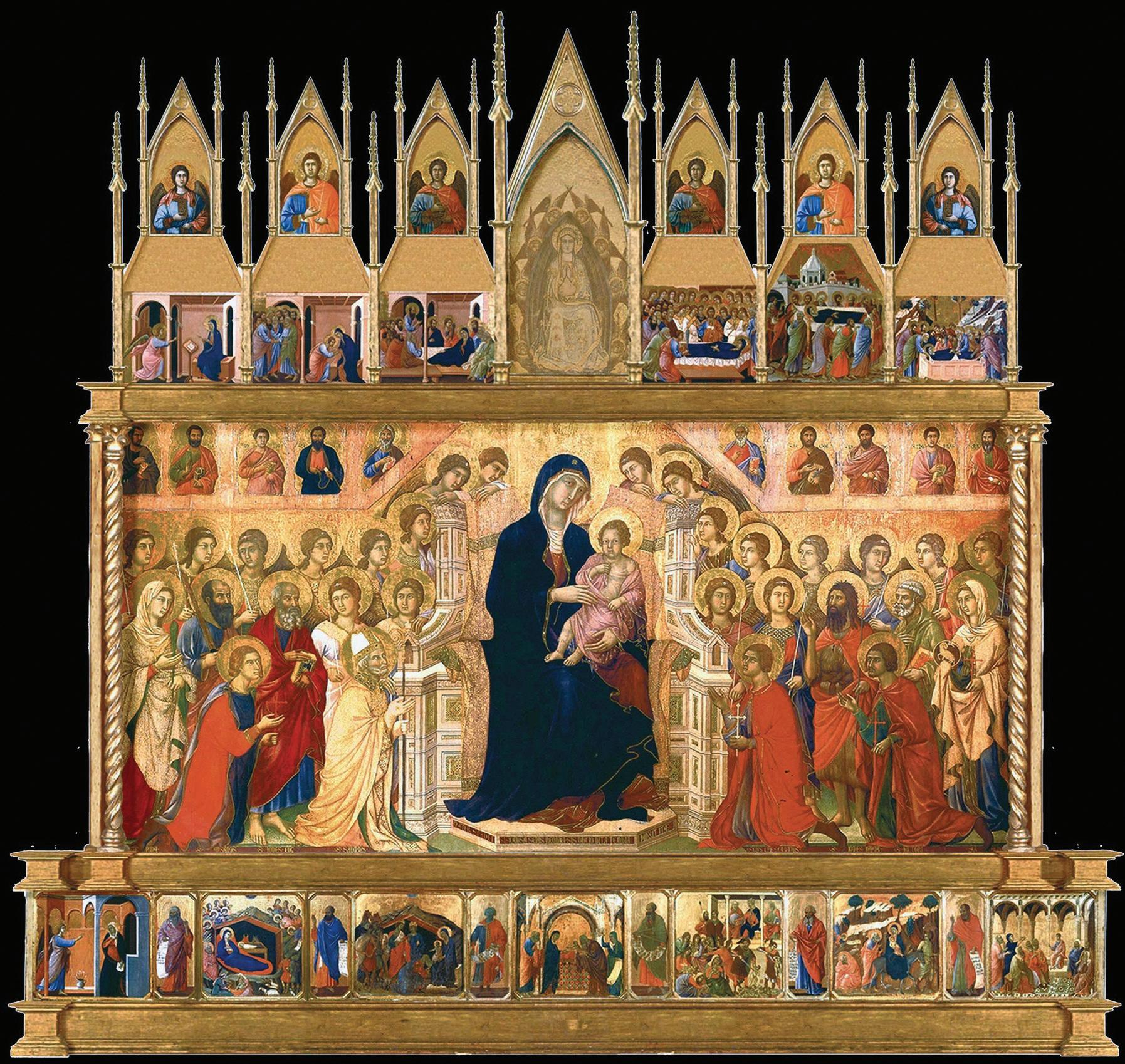
represent actual (that is, historical) events, not religious or mythological stories. Even though there can be slippage between the representation of historical and nonhistorical events in visual artworks (as is also found in the various literary forms of history and fiction), this does not detract from the ability of historical narratives to provide some kind of knowledge about the past. The question becomes “what kind of knowledge?” Every representation of the past carries specific ideological implications. Again, Hayden White: “The issue of ideology points to the fact that there is no value-neutral mode of emplotment, explanation, or even description of any field of events, whether imaginary or real, and suggests that the very use of language itself implies or entails a specific position before the world which is ethical, ideological or more generally political.”37 Correspondingly, when those holding power over commemorative decisions erect monuments representing historical subjects, those subjects are invariably rendered to promote an ideology, to sway public opinion, and sometimes to suppress dissenting voices and consolidate power, especially when displayed in public spaces.
Fig. I.4 Duccio di Buoninsegna, Maestà (1308–1311). Siena, Museo dell’Opera Metropolitana del Duomo. Photo: Wikimedia Commons
The Production and Reception of Historical Subjects
Who is responsible for how an artwork represents a historical subject—how it comes to demonstrate a concise expression of its action and meaning that transforms it into a strong and memorable image—is not always transparent. At first glance, the artist of a visual narrative appears to be both playwright and director. As in theater, the scene in the story must be carefully staged, with the setting, scenery, props, and lighting composed for effect and coherence; the actors must be placed within the set for visibility, choreographed to advance the action cogently, and coached in their expressive body language. There is no dialogue, however: the actors remain mute (works with inscriptions or accompanying texts examined in this study provide important exceptions). Artists seem to choose how to portray the story visually in narrative art, to choose which narrative structure to represent space and shape time. Their vantage point becomes our vantage point and profoundly conditions our experience.
Artists, however, rarely work in isolation, especially when works are created for commemorative purposes: commissioning patrons frequently intervene to ensure that the vantage point conveys the story in a way that corresponds with their requirements. Although Friedrich Heine and his crew painted the original cyclorama canvas, they did so for Wehner and APC; they were further assisted by carpenters, crane operators, plasterers, and other fabricators. The various artists who recast the work for Atkinson and those who restored it under Kurtz and later Stone—again assisted by numerous technicians—are also responsible for its appearance. “Authorship” is thus shared between the artist(s) and the patron(s); the role is no longer conceived of as an autonomous creator but as a mediator in a communicative chain between collective cultural concepts and anticipated audiences.38
The sociologist Howard Becker suggests a model in which art production is understood as a “collective action.” He proposes that a work of art is made through the coordination of many individuals and distinct social groups: “art worlds” that attend “complex cooperative networks” of production and consumption.39 An artwork comes about when these different groups undertake specific sets of responsibilities to negotiate its form, materials, and abstractions: what he terms conventions. Conventions in the sense of the material composition of an artwork will be discussed below; here I want to emphasize Becker’s insight into convention designating the social meeting that brings together different groups sharing a common interest in effecting the artwork. Conventions in this sense “regulate the relations between artists and audiences, specifying the rights and obligations of both,”40 and along these lines relate to the agreements or rules establishing the place and meaning of art in society. The primary referent of the image, however, is the viewer, for it is only through the act of viewing that the artwork is engendered with meaning. The viewer is not a passive observer; instead, the work must arouse an active response. Ideally, from the perspective of the producers, this response will cause the viewer to endorse their agenda and engage additional participants, for the
meanings of artworks are not only visually perceived by viewers in isolation but also interpreted and discussed with others.
Consequently, Becker stresses the role shared meaning plays in attributing significance to art; it is nearly impossible for a work to have any social resonance without a common understanding of a work’s significance. By using the language and the visual customs and practices of their society and period, communities of makers display their individual intentions within a structure of inherited collective modes of perception, thought, and expression. Alfred Gell states that “the nature of the art object is a function of the social-relational matrix in which it is embedded,”41 that is, a consequence and a purpose of the social and political context that gave rise to it. As noted, patrons—which following the expansive definition here also includes those who act as agents on behalf of ruling elites—produce commemorative works featuring historical subjects to shape what is remembered and how it is remembered. These works represent “systems of action, intended to change the world.”42 They do not merely mirror society, they are implicated in it.
According to Becker’s model, the cyclorama is the product of a community of makers that collaborated to determine its appearance and positioning: these included not only designers, painters, and other fabricators but also the diverse entrepreneurs and promoters who exploited its commercial power, the philanthropists and bureaucrats who oversaw its relocation first to Grant Park and then the Atlanta History Center, and all the politicians and propagandists who manipulated its meaning. When groups deploy artworks representing historical subjects in public spaces, the commemorative imperative is such that the portrayed person or event embodies an essential component in an authoritative or official narrative. Public monuments transform private and internalized responses into a collective moral purpose, insofar as they are shared communally. The absence of events that cause a community shame, such as loss in war, demonstrates society’s attempt to eliminate them from the collective memory, or as with the cyclorama, rectify them in the narrative. When power shifts occur that allow the expression of differing experiences and perspectives, then social ruptures allow heterogeneous, conflicting memory communities the opportunity to express themselves. This is what has happened with Confederate monuments.
The Sources for Visual Representations of Historical Subjects
The makers of visual representations of historical subjects control their intention and significance. They select from certain sources to communicate a particular political meaning, to indicate who, both politically and culturally, is in charge, and to legitimize or convey other messages about the elite’s rule. Those sources are of two kinds: texts and artistic traditions. A text might be just that, a memoir written by a participant in the event, the account of a writer who recorded the memories of others, or the testimony of contemporary witnesses (perhaps even the artist).
Artists may sift through conflicting oral accounts including soldiers’ stories, and even rumor and gossip. Materials like court proceedings, contracts, and treaties constitute different kinds of texts, as do preserved relics and artefacts, and maps, drawings, and other artworks, reference to which can help a visual representation establish the sense of reality that heightens its authority. How the information drawn from these accounts is conveyed visually—what form the representation takes—is a crucial component in the negotiation put forward by Becker.
Artistic tradition takes into consideration conventions in the more specialized art historical sense, that is, the practices governing the material composition of artworks, such as the choice of medium, the handling of materials, and visual references to other works of art; these are generally referred to as aesthetic or stylistic conventions, which also extend to established ways of representing things, generally recognized by artists and patrons at a specific time and place. Aesthetic conventions, contemporary with a work’s production, represent the tradition by which the groups involved in that production authoritatively locate themselves in their present by determining that such authority comes from an historically privileged continuity. A classic study of representational conventions (emphasizing the psychology of perception) is Ernst Gombrich’s Art and Illusion. 43 Visual artists play with the ambiguities of vision perception and establish conventions differing from everyday perception to resolve them through composition, three-dimensional layout and spatial scale, light and color, shape, and movement. By framing them as inherited schemata—formal motifs—Gombrich emphasized representational conventions as an emergent process in his art history.44 Although aspects of his model have been rightly challenged, his identification of representational conventions as a method to make visual imagery comprehensible to contemporary viewers, and his research into how their implementation can take precedence over accuracy, complement Becker’s social dynamic and remain highly useful to the topic at hand.45
Artistic tradition is not something simply copied from its models, but is transformed by its use in a new context. It is a rhetoric of identity shared by the parties that negotiate the production of an artwork, an expressive construct that presents the past as self-evident and regulates claims about meaning and belonging. It is a factor contributing to the cultural context, what Pierre Bourdieu terms the cultural habitus the way individuals and societies perceive and react to the world based on their particular background—an interesting way to think about traditions, history, and identity. Bourdieu describes this ethos or mentalité as an artifact of history that “produces individual and collective practices—more history—in accordance with the schemes generated by history. It ensures the active presence of past experiences, which deposited in each organism in the form of schemes of perception, thought and action, tend to guarantee the ‘correctness’ of practices and their constancy over time more reliably than all formal rules and explicit norms.”46
Art historians also work within traditions when they construct histories that locate an artwork in some temporal and geographic continuity (such as early Italian
Renaissance or Nigeria’s Edo period), further refined by medium and other criteria, in order to evaluate it, to reconstruct the conventions contemporary with its production, and understand its system of signs. The exercise is therefore somewhat reflexive (as with the characteristics attributed to Roman historical relief sculpture above). When art historians write their narratives they contribute to an academic tradition that is complex and sometimes contentious, for each narrative, including this one, is conditioned by contemporary priorities and is the expression, conscious or not, of a cultural ideology writing its own history. It is provisional and can only tell a partial story.
Structure and Scope of this Study
The following chapters, proceeding generally chronologically, provide a series of case studies, the aim of which is to shed light on a broad range of cultural formations from throughout the history of art.47 Uniquely among various modes of communication, visual images—especially those operating within figurative traditions, as is the case with the works examined in this study—concretely embody what they mean. (The cultural context in which some works once operated was such that they can also be said to be, in a sense, what they mean.) Figural art is basically mimetic and for historical subjects is understood to reproduce some experienced reality. Many readers will be familiar already with the monuments in this study from standard art history survey texts where they are put forward as exemplary products of their cultures. The historical events they commemorate usually play only a minor role in those accounts, but here they are of crucial importance. The event is the artwork’s subject matter—the experienced reality it reproduces—that was chosen to affirm ideas of power relationships and social hierarchy, while exercising power itself over the minds of receptive viewers. Since it is essential that their factual subject matter be identified precisely in order to construe how these images functioned within their originating cultures, I will pay particular attention first to the historical event the work commemorates and then examine the figures, actions, and other details it represents.48 When the evidence permits, I also examine the reasons patrons and makers might have chosen a particular event for commemoration.49
Contemporary viewers’ interpretation of a work’s meaning is realized in keeping with their collective cultural concepts, with dominant social structures and values, political circumstances, religious and cultural premises, and collective mentalities. The makers convey, through a system of contemporary visual signs and cultural codes (which often have an abstract relationship to their meaning), a meaning particular to the subject for those viewers, which when construed influence how that subject is apprehended and remembered. When the viewer comes from a different time and place and does not share those cultural concepts, it is necessary to reconstruct them and to decipher the signs and codes within the work; this is a task for
the art historian. The reconstruction of factual meaning and what a work meant within its own cultural sphere depends on the well-established three-stage theoretical system developed by Aby Warburg and Erwin Panofsky, by which analysis follows from the identification of subjects to the recognition of culturally marked meanings, and finally to understanding an artwork as the expression of perceptions and attitudes of societies and historical periods.50
That approach, however, has also been criticized for its positivism and for singling out one essential, dominant meaning embedded in a work recognized by some ideal contemporary viewer; nor does it recognize different, unfixed meanings.51 After its making, the act of viewing by all its viewers throughout time—a chain of reception that also includes art historians and their narratives about the work—engender an artwork with fresh meaning. I therefore also draw upon semiotic approaches to open up the system and allow for diverging interpretations by viewers of different cultural frameworks.52 In addition, comparisons here with other, related works from the same period provide a broader footing for analysis that demonstrates how these monuments not only characterize their cultures, but also facilitate our understanding of what was added, borrowed, or altered to the artistic traditions then current to enhance a work’s commemorative function.
Finally, particular historical subjects were chosen in their cultural contexts not merely as reflections of social values but as agents in social interaction. The question is not only what images mean but how they are used, and what they do. This requires investigating not only the images as such but also the social practices of erecting and using them. Historical commemorations play a role in the negotiation of political and social power. I therefore explore viewing as a response to the formal effects of these works as a practice of social relevance. The makers of Confederate monuments may have sought to stir pride in a (contrived) shared past with viewers in their community, but we can no longer deny the very real experience of other viewers who interpreted the monuments quite differently: as admonitions to “remember your place,” as memorials to oppression, fear, and hatred through a cultural ideology that was rarely voiced more than a century ago when the monuments were erected.
This is the first work that undertakes a broad examination of historical commemorations across temporal and geographic boundaries.53 A global scope comparing and contrasting different cultural practices helps demonstrate how particular decisions operated within a range of diverse synchronic and diachronic possibilities, and may help redress a surging backlash found in some circles against globalization and opposition to openness and connection. A close reading of these artworks, which are rhetorical constructs of their contemporary worlds, demonstrates how their imagery helped individuals and groups shape their apprehension of those worlds. The choice of monuments may strike some readers as idiosyncratic, but it is hardly arbitrary. My goal is not to privilege one set of monuments or artistic practices over others. As scholarship grows increasingly narrow, it is my hope that an investigation like this one, which is necessarily
synthetic, will suggest to specialists what can be done when they use what they know about their own areas of expertise to ask questions about others. This process encourages what Joan Didion calls “taking a long view,” here of an artwork’s place in history, a practice that promises a more profound comprehension of the work’s layered significance.
